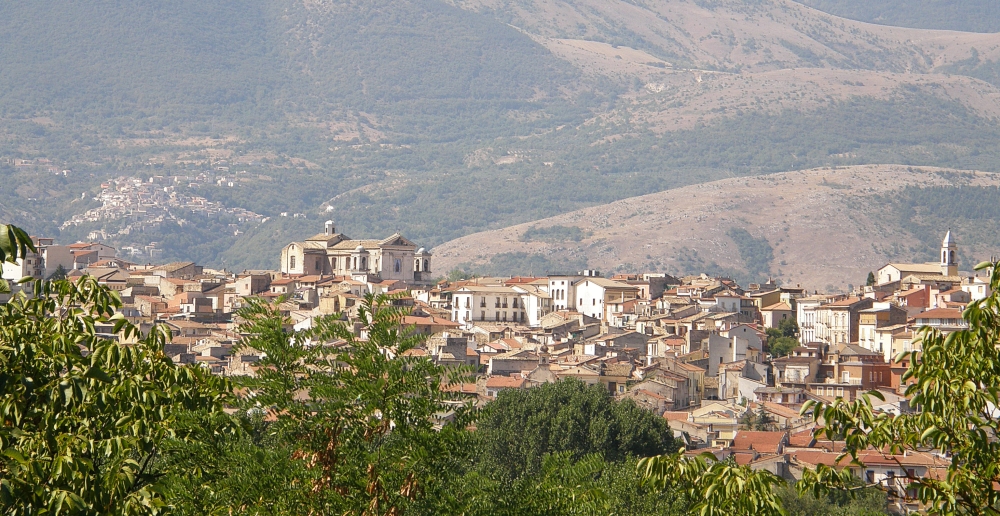

Pratola Peligna Superiore
The station of Pratola Peligna Superioreestablished in 1921, is the closest railway stop to the Sulmona terminus. Located higher than the town centre, its name serves to distinguish it from the station on the Rome–Pescara line.
The origins of Pratola are shrouded in legend. In the 2nd century BC, according to some antiquarian sources the town of L'Aquila, a pagusparticipated in the war against the expansion of the Urbs in 91 BC.
The subsequent Ostrogothic domination is evidenced by the rich finds in a tomb dated to the 6th century.
“In loco Pratulae” can be read in the Chronicon Vulturnensisa document dated 997 and kept in the archives of the Morrone abbey. This is the first occurrence of the name of the town in the L'Aquila area. At that time, however, there was still no built-up area; it is more correct to speak of a small pre-urban agglomeration. It was not until the 12th century that a real fortified village appeared. In 1170 the castrum Pratulae ame under Norman rule and in the following century under Angevin rule.
The history of the village is characterised by revolutionary turmoil. The people rebelled against French rule in 1799, the Bourbon government of Ferdinand II in 1848 and, finally, against the Fascist regime in 1934. During World War II, in August 1943, Pratola was repeatedly bombed by the Allies. As a result of this resistance, in 2006 the then President of the Italian Republic, Carlo Azeglio Ciampi, awarded the village the bronze medal for gallantry in civilian life (merito civile). “A strategically important town during World War II, it was subjected to continuous and violent bombing, which caused numerous civilian casualties and the destruction of its industrial assets. The population, forced to take refuge in the surrounding countryside, contributed to the war of liberation by setting up the first partisan units, suffering severe reprisals from the German army. 1943–1944”.
According to a folk tale, during the plague epidemic of 1456 a peasant received a message in a dream. The Virgin Mary revealed herself to the man and reassured him by announcing the end of the epidemic. When the peasant woke up, he saw in the ruins of the church where he had taken refuge a canvas with the image of the Virgin Mary, and he begged her to stop the scourge. Once the epidemic was over, the painting became an object of worship. Initially, the icon was placed in a small chapel, but this could not accommodate the huge influx of worshippers and it became necessary to build a new shrine. The church was built from scratch in the mid-19th century and given the name Maria Santissima della Libera.
The shrine was damaged in the earthquake of 6 April 2009. Still closed during the strong earthquakes of 24 August and 30 October 2016 and 18 January 2017, it was reopened to the public in 2019.

Project by Riattivati Youth Cultural Association
With contributions from: FAI – Fondo per l’Ambiente Italiano ETS, INTESA SANPAOLO, Rotary Club Rieti
Thanks To the promotion comittee: Amici di Rieti, Associazione Culturale Giovanile Riattivati, Rotary Club Rieti e Associazione Collezionisti “Sabatino Fabi”

